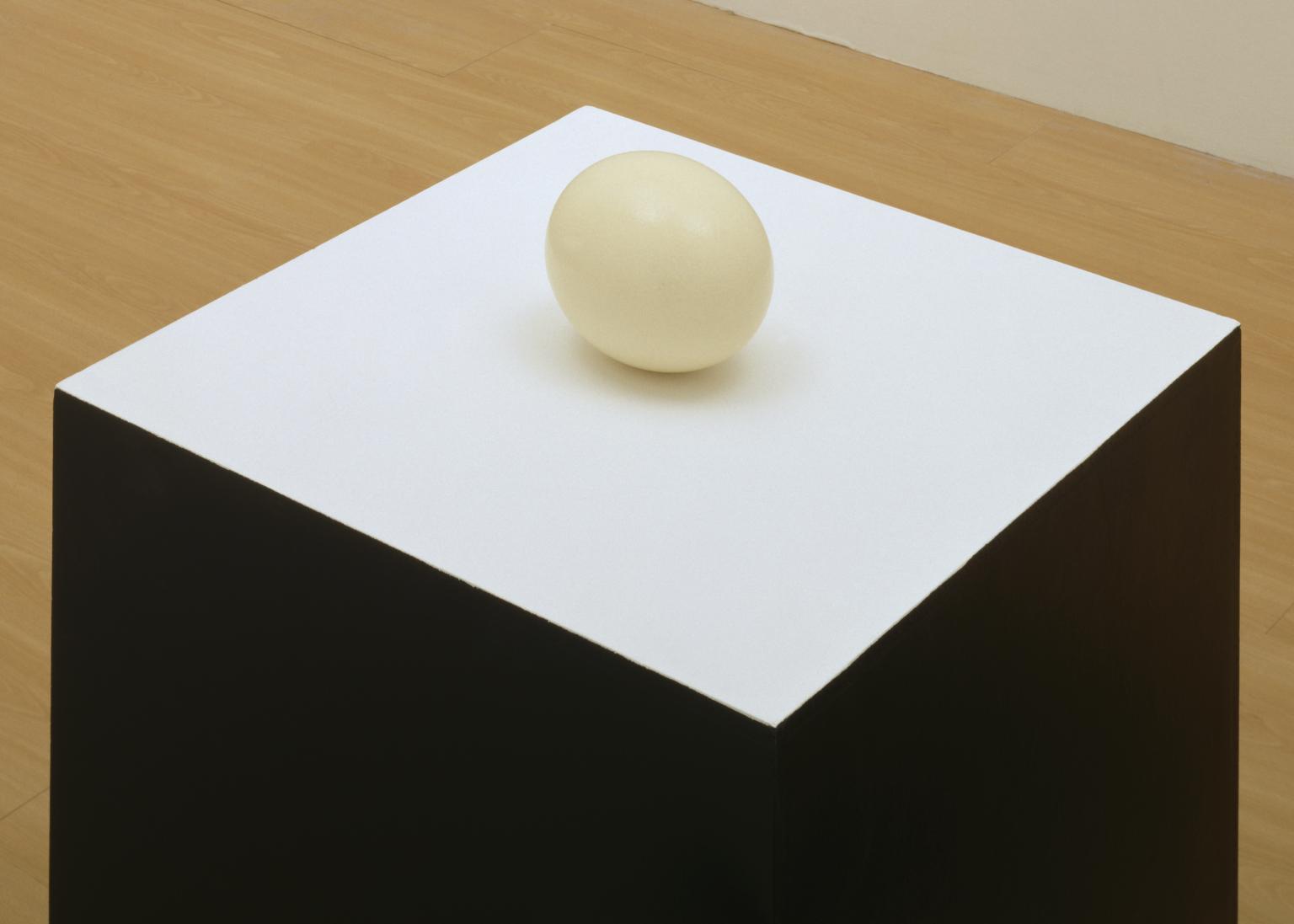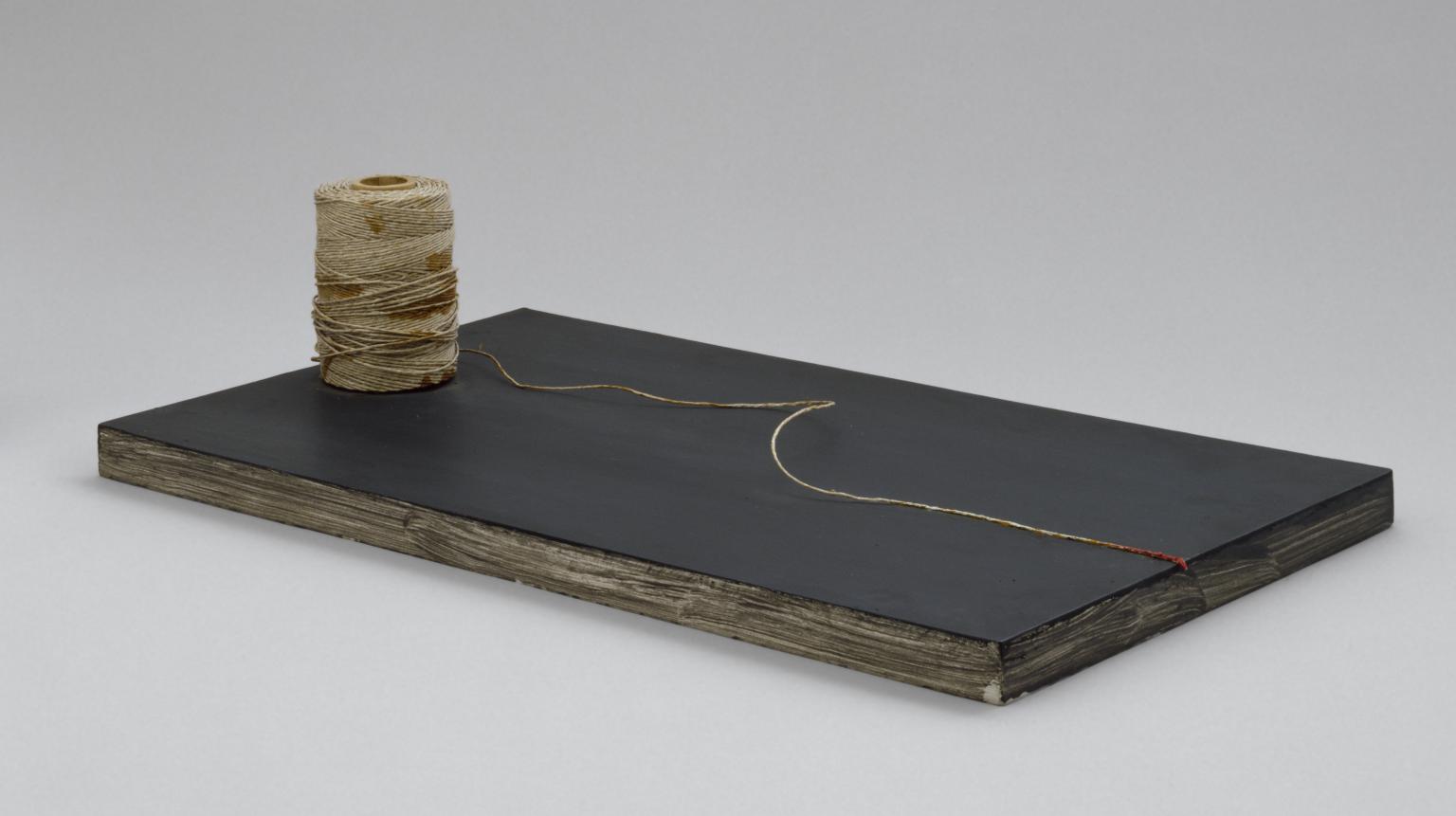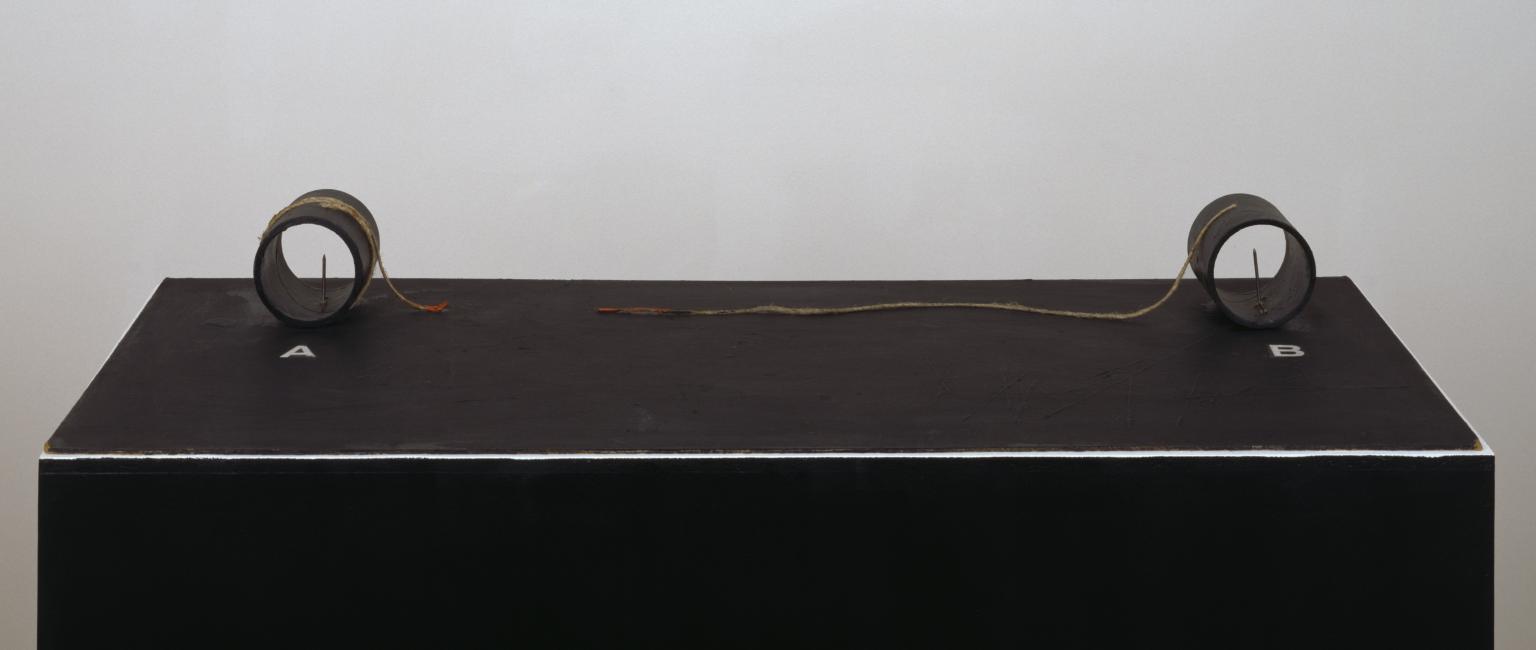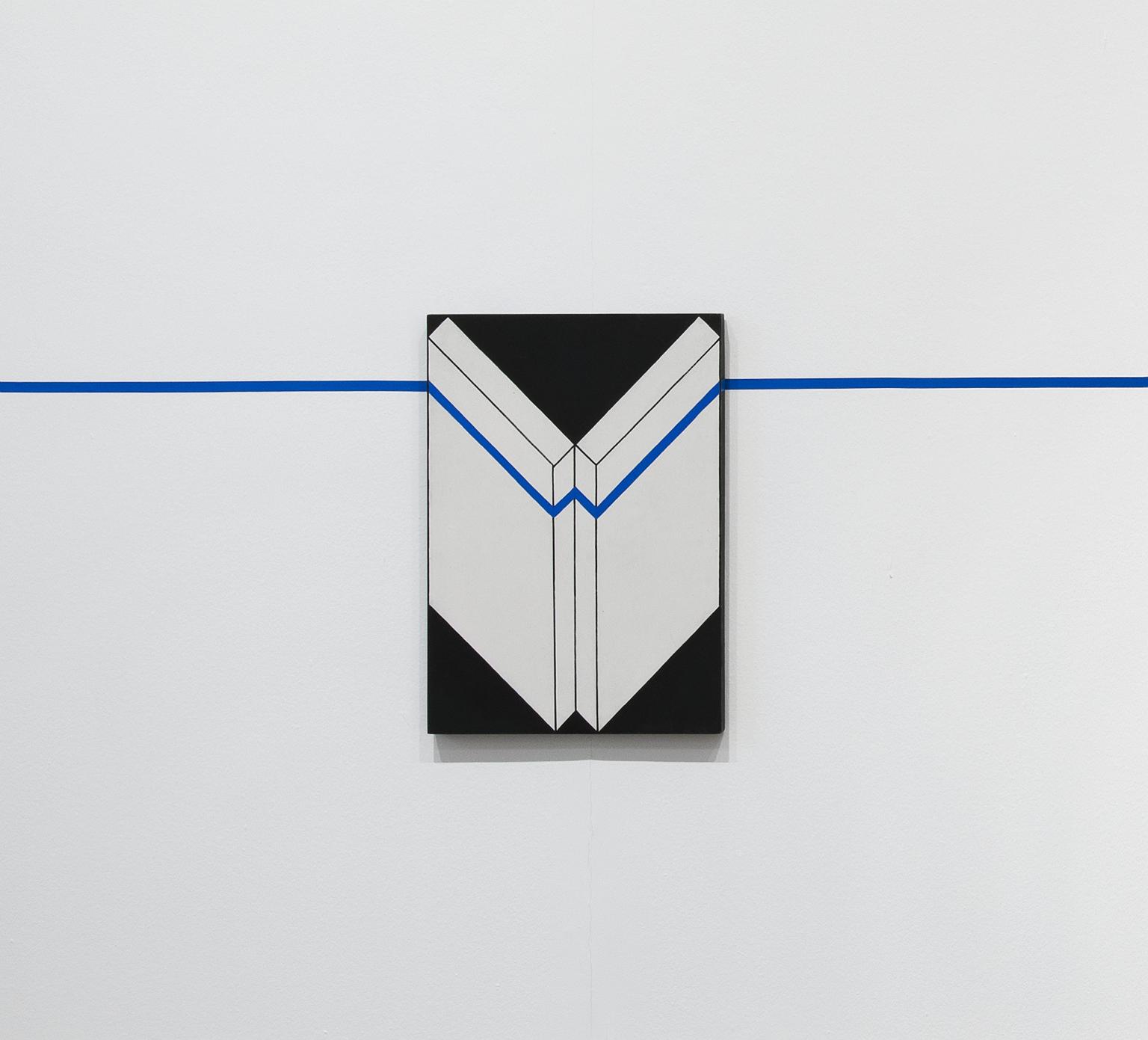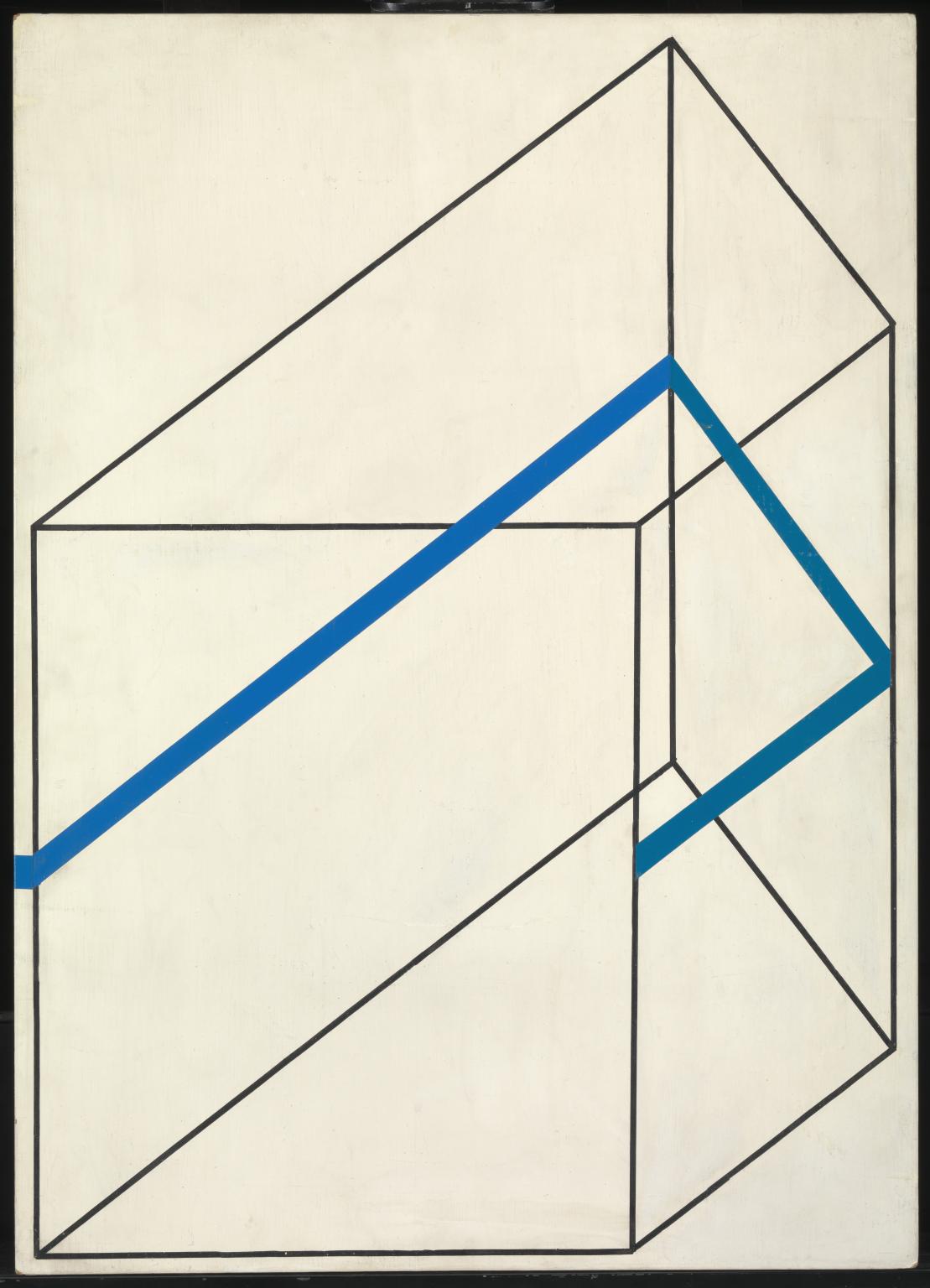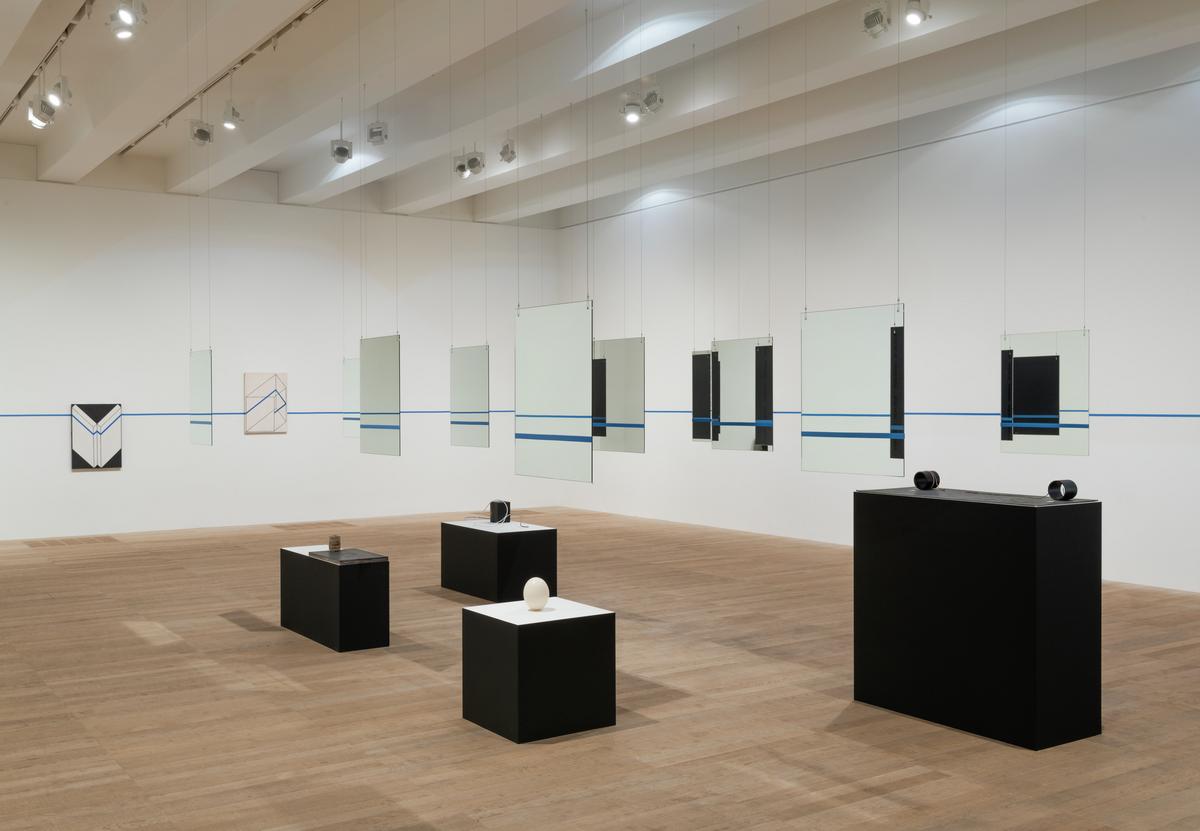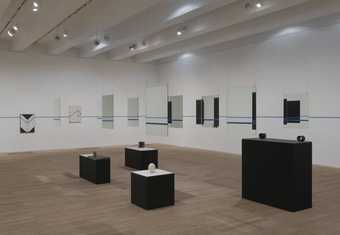9 rooms in Performer and Participant
Discover the innovative theatrics of the Polish artist Edward Krasiński
Edward Krasiński used tonal colour, lighting, photography and reflective surfaces to challenge the fixed nature of sculpture.
Krasiński began his career as an illustrator and set designer, going on to make paintings and sculptures, often using found materials such as cables, pipes and string. In the early 1970s he began to create installations which experimented with alternative ways of presenting and experiencing art. Krasiński transformed galleries into maze-like spaces through the use of cleverly positioned plinths, hanging objects and blue adhesive tape.
The installation displayed here consists of 12 suspended mirrors of equal size. A continuous line of blue tape runs along the walls and the surface of each mirror. The tape is applied at a fixed height of 130cm. It integrates the mirrors with their surroundings, erasing the difference
between real and reflected space. The rows of overlapping mirrors generate a sense of movement in which the space seems to recede and advance, depending on the viewpoint of the spectator, who is also reflected in the work.
The mirrors were first installed in 2001 at the Klosterfelde Gallery in Berlin. They were exhibited alongside several of Krasiński’s Untitled sculptures from the 1960s and 1970s, including the four works displayed here. The sculptures were drawn into a relationship with the mirrors and in turn the spectators surrounding them. Krasiński was concerned with how entire environments, not only the works within them, were experienced. He continued to question the traditional conventions of displaying art until the end of his career.
Curated by Helen O'Malley
Art in this room
